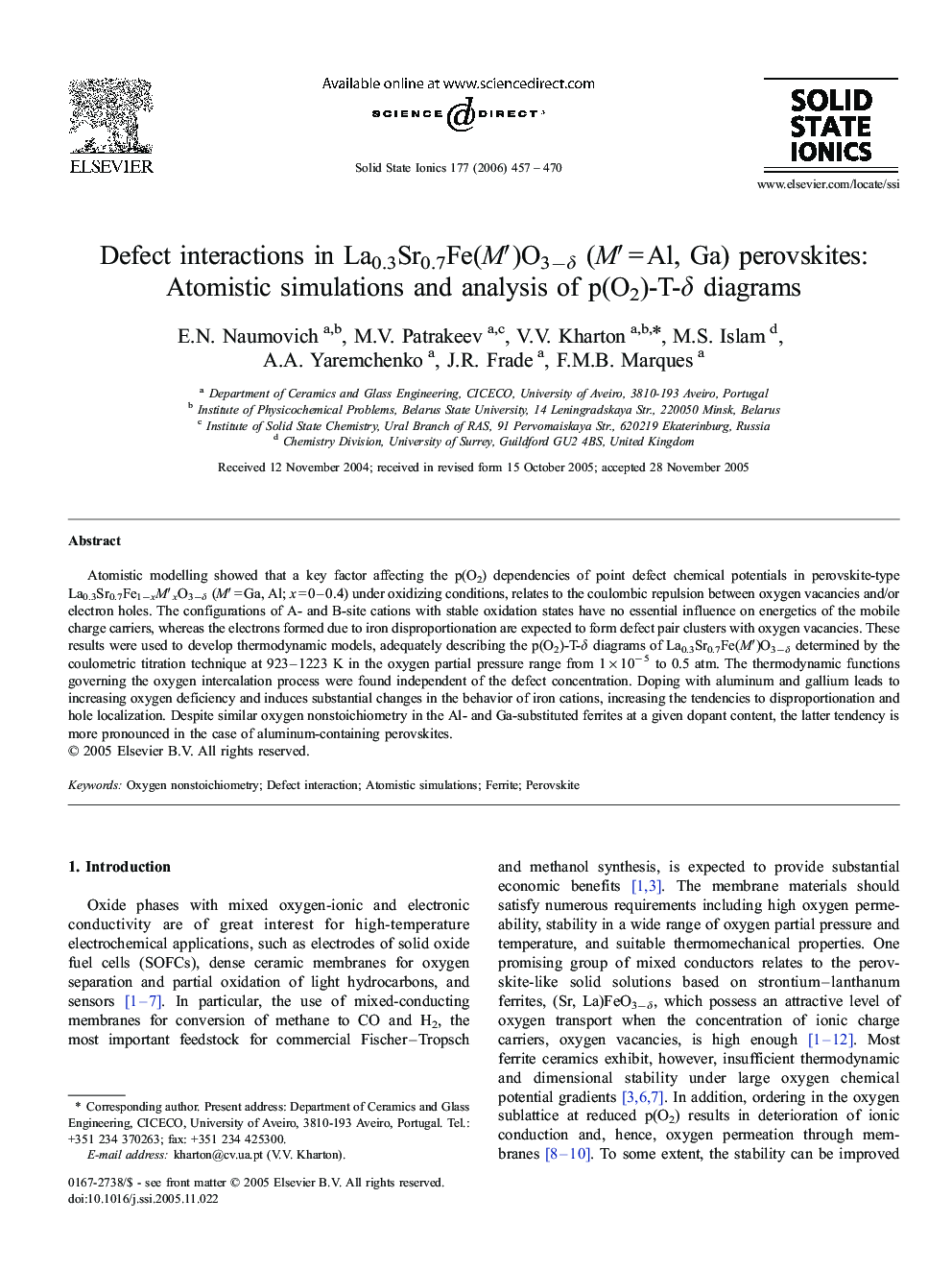| Article ID | Journal | Published Year | Pages | File Type |
|---|---|---|---|---|
| 1298423 | Solid State Ionics | 2006 | 14 Pages |
Atomistic modelling showed that a key factor affecting the p(O2) dependencies of point defect chemical potentials in perovskite-type La0.3Sr0.7Fe1−xM′xO3−δ (M′ = Ga, Al; x = 0–0.4) under oxidizing conditions, relates to the coulombic repulsion between oxygen vacancies and/or electron holes. The configurations of A- and B-site cations with stable oxidation states have no essential influence on energetics of the mobile charge carriers, whereas the electrons formed due to iron disproportionation are expected to form defect pair clusters with oxygen vacancies. These results were used to develop thermodynamic models, adequately describing the p(O2)-T-δ diagrams of La0.3Sr0.7Fe(M′)O3−δ determined by the coulometric titration technique at 923–1223 K in the oxygen partial pressure range from 1 × 10− 5 to 0.5 atm. The thermodynamic functions governing the oxygen intercalation process were found independent of the defect concentration. Doping with aluminum and gallium leads to increasing oxygen deficiency and induces substantial changes in the behavior of iron cations, increasing the tendencies to disproportionation and hole localization. Despite similar oxygen nonstoichiometry in the Al- and Ga-substituted ferrites at a given dopant content, the latter tendency is more pronounced in the case of aluminum-containing perovskites.
